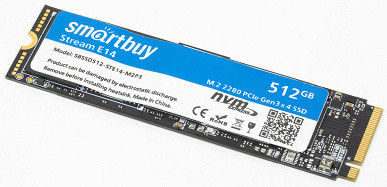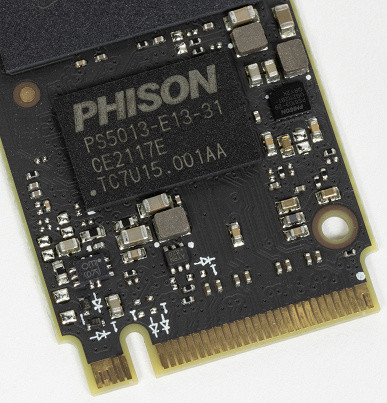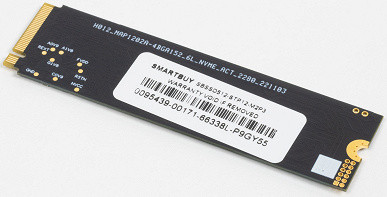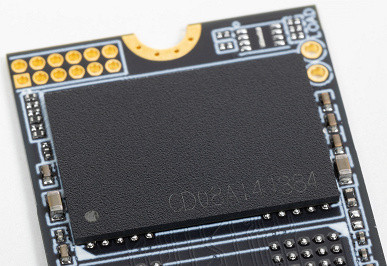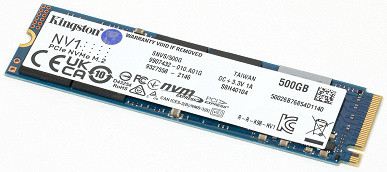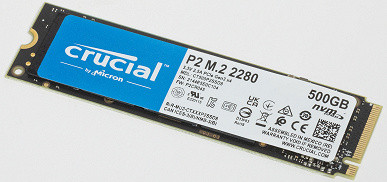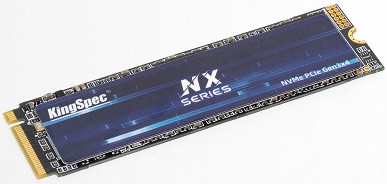The decision of some American, Japanese and Korean brands to exit the Russian market in the previous year led to changes in the SSD segment and beyond. The departure of these brands, whether voluntarily or due to external pressure, has caused changes in market dynamics. Parallel imports have appeared, partially legalized due to the current situation. However, the warranty period for purchased SSDs has been significantly reduced to one year, since it has become too expensive to provide support without the help of the manufacturer.
Despite this, the manufacturer Kingston turned out to be an exception to the rule. Kingston SSD deliveries are not considered parallel imports, which allows stores to maintain warranty periods. However, this situation did not arise instantly: at the beginning of 2022, the warranty period for Kingston SSDs was one year, but after a month, the warranty period magically increased even for sold SSDs. It is likely that Kingston and the relevant importers have reached an agreement regarding warranty issues.
However, most SSDs from «familiar» brands now offer only a one-year warranty, which worries many buyers. Some people prefer to continue to purchase products from well-known brands on local marketplaces, even at the expense of the lack of a full guarantee. Meanwhile, Chinese SSD manufacturers are becoming more prominent in the market, offering competitive prices and sometimes even longer warranty periods.
Today we will turn our attention to a more exciting area — affordable NVMe models. SmartBuy recently updated its product range so that the more expensive NVMe products are no longer included. Only the Stream line remains — this usually includes SSDs on four-channel controllers without a buffer. This is a typical mass segment, and the Stream P16 belongs to the upper part — it is a PCIe Gen4 drive based on the Maxio MAP1602 controller with 232-layer YMTC TLC memory. Although there are many such devices on the market, expanding the choice is always beneficial for the buyer. And the Stream P12 and E14 models, although simpler and cheaper, are still relevant today as budget offers.
Once upon a time, the SATA interface dominated here, but we have already talked enough about its deplorable state. The main thing to understand is that if you have a choice, it is best to turn to NVMe. This is the best option for a new computer, and even for older platforms that support new interfaces and protocols, they are already suitable.
Usually in the segment of available NVMe it is not possible to find anything interesting for testing. Budget Gen3 controllers are often used here, sometimes even several years old, and the memory may not be the newest or even leftover stock of old ones. Why is this approach popular? Perhaps this allows you to save a little on the disposal of leftovers. However, today we have a slightly different situation — one of the two SSD products we are studying is new to us, and in general such models are rare and specific on the market.
SmartBuy Stream E14 512 GB
The mystery begins with the name itself. From this it can be assumed that one of the Phison controllers is used. Although SmartBuy, unlike Digma, does not indicate a specific controller in the specifications, usually the names of the controllers and the SSDs on them correspond to each other unambiguously. This story began about five years ago with the Stream E8T — based on the Phison E8T. It was followed by the Stream E13T and E13T Pro models — based on the Phison E13T. The first attempt to conquer (budget) PCIe Gen4 was made about three years ago with the Stream E19T — based on the Phison E19T. However, Phison's range of four-channel bufferless controllers almost ends there. There is also the E15T — the same as the E19T, but without PCI Gen4 support. And the Phison E14T simply doesn’t exist. And there is simply no E14 either: eight-channel controllers with DRAM are numbered E12, E16 and E18. Two of them were previously used in the SmartBuy Impact E12 and E16 models — in a different line than the Stream. So who are you, finally?
There is nothing special in appearance — all SSDs (especially budget ones) look almost the same. However, it is worth paying attention to the suggestion to remove the label from the front when installing the radiator — unlike many manufacturers, this does not affect the warranty. In this case, this must be done without fail — even if it had an impact.
For comparison, here's a Crucial P2 on a Phison E13T (left) and a SmartBuy E14 on… an HG2283. Even the markings are similar, not to mention the sizes and packaging of the chips. Also, in both cases there is the same PMIC Phison PS6103 — it is often found paired with E15T, E19T or even PS2251-17 (controller for top-end USB flash drives with a USB3 Gen2 interface). So everything is very similar to Phison — but HG2283. According to information from the Chinese Internet (other segments know nothing), this is indeed a slightly modified E13T modification by Phison itself, made by order of the Shenzhen Hongxinyu Electronic Technology company.
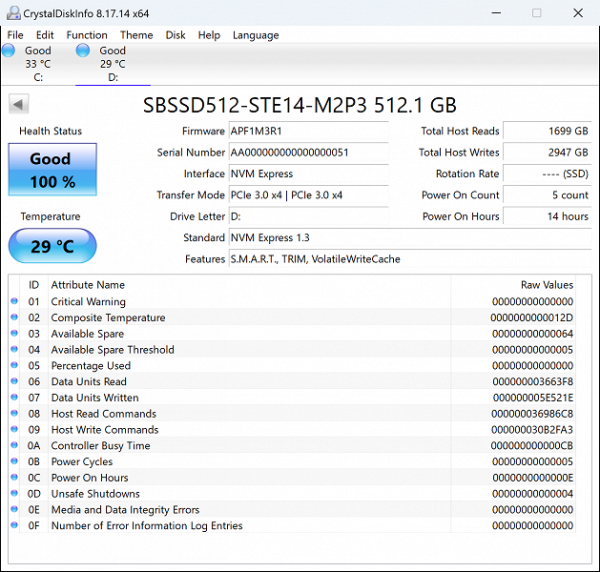
Why did you choose this particular solution if the E13T is long outdated and has already been replaced by other controllers in the Phison range? The announced E31T, for example, already supports not only fast memory, but also PCIe Gen5. It is for this reason that the E13T is obsolete. The memory communication speed is limited to only 800 MT/s, which is too low by modern standards. Modern memory can work much faster. So why not choose something more modern? We can only speculate here, but domestic Chinese use probably required something that could be produced to the 28nm standards that SMIC had long mastered. And this is the maximum that the E19T could offer. It could have been promoted, but Phison probably preferred to distance itself a bit from the process, which is why a modified E13T was chosen rather than a pure E19T. By the way, the Hongxinyu company in this regard is very similar to a gasket company — it usually does not deal with SSDs or serious matters. However, formally it includes the HG2258 controller, which is a slightly modified, but internally unchanged Phison S11 controller: a budget SATA controller from ten years ago that is still in demand. But the HG2283 is significantly different from its predecessor, so it will be interesting to see the performance of an SSD based on it.
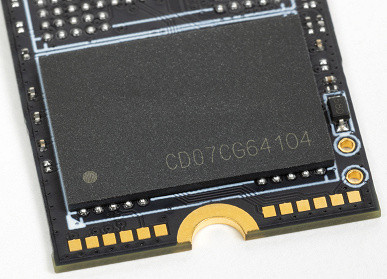
The software identification memory remains inaccessible (the utilities for Phison do not work — unlike the HG2258), and even the labeling does not give us any clarity. Chinese ODMs offer SSD on this controller with Samsung or SK Hynix memory, probably TLC, but the exact specification is unknown. Outside of China, there are almost no other SSDs on this controller, with the exception of the Netac NV2000 on Maxio MAP1202. In this context, the name SmartBuy Stream E14 seems logical — it is an improved version of the discontinued Stream E13T. Although the E13T controller is outdated, this SSD can offer reasonable speeds at a low price, making it attractive in the budget segment. Capacity ranges from 128GB to 1TB are also attractive for a variety of needs, although 128GB SSDs are becoming rare in today's market. However, it is recommended to avoid SSDs that are too small due to their disadvantage. It is better to choose an SSD with a capacity of 512 GB or 1 TB, especially in the budget segment.
SmartBuy Stream P12 512 GB
There are no mysteries in this case. The sticker can be easily removed, but even without it it is clear that a Maxio controller is being used. On the back of the board it is directly written which controller is used. And this fits well with the name: P12 — MAP1202. Exactly the same as P16 — MAP1602.
The only thing that attracted attention was the presence of the original version of the platform with 128-layer YMTC memory at the end of last year (although this cannot always be determined by the markings). In products of other brands, since the fall, most often this controller has been found with the same 176-layer TLC flash from SK Hynix. Theoretically, these types of memory are equivalent, but in practice the MAP1202 works faster with YMTC, which led to a slight improvement in performance. However, there is no guarantee that this situation will continue for long, or that it will continue at least for the time being. As already mentioned, SmartBuy does not even indicate the controller itself in the Stream line, but regarding the memory it only says that it will be some kind of TLC 3D NAND, and nothing more. But you shouldn’t criticize the company for this — this practice is common in this segment. For example, Kingston simply states that its budget lines use both TLC and QLC with different controllers, without specifying which is used in each specific case.
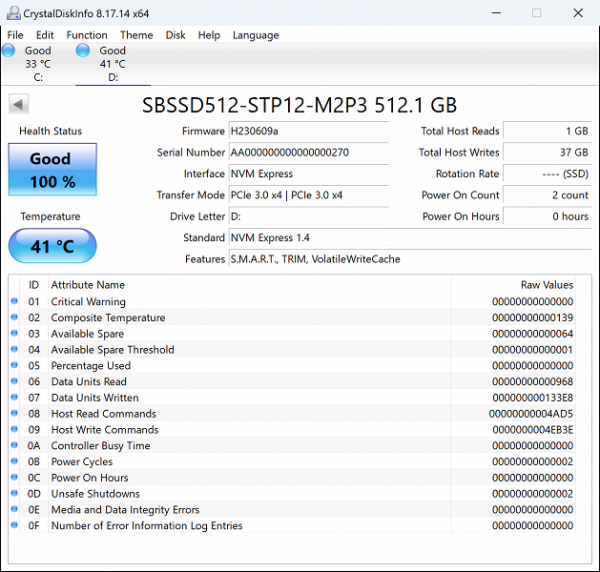
In principle, there would be no need to test this SSD, since we are already very familiar with how such a combination works. However, it is interesting to compare two products from the same brand with each other. They're almost identical: the same capacities from 128GB to terabytes, the same three-year warranty with a total write capacity (TBW) limit of half the capacity. For 512 GB it will be 256 TB, and all other capacities are proportional. The prices for both SSDs are almost the same — at the time of purchase, the P12 was slightly more expensive than the E14, but the difference was only about 5%, which can be neglected. A direct comparison of operating speed under the most correct conditions is of interest. Although how the Stream P12 works is clear in advance, the Stream E14 is a real mystery.
Testing
Testing methodology
We operate a test bench based on an Intel Core i9-11900K processor and an Asus ROG Maximus XIII Hero motherboard with an Intel Z590 chipset. This gives us the opportunity to connect SSDs in two ways: via PCIe Gen4 “processor” lines and PCIe Gen3 “chipset” lines. However, today we will not need the first method, since all devices are oriented to the old interface. But the “chipset” controller here is actually the same one that was used by Intel with chipsets starting from the “hundredth” series back in 2015. Therefore, the results also apply to similar systems that could have been upgraded earlier.
Samples for comparison
It's been a while since we've tested half-terabyte drives, but we have some great options to compare. In our arsenal we have the Crucial P2 on the Phison E13T controller, the Kingston NV1 on the Silicon Motion SM2263XT and the MSI Spatium M390 on the Phison E15T controller — they all represent the same segment. The latest SSD is of particular interest, since it represents almost a transition from the budget PCIe Gen3 to the no less budget Gen4: the controller is identical to the E19T with support for the latter, but it is simply disabled. All three drives use the same memory — 176-layer Micron B47R, one of the fastest on the market. But the Phison E13T cannot fully reveal its potential, so in fact the Crucial P2 and MSI Spatium will “squeeze” the SmartBuy Stream E14 from above and below. Kingston NV1 — just for comparison: it has been discontinued, but the controller is still popular (especially in China). We also added another SSD, KingSpec NX, primarily for mass comparison. It uses the same Maxio MAP1202 controller as the Stream P12, but with SanDisk's slow BiCS5 TLC memory on terabit chips. This SSD will be the slowest of all, but it is possible that the SmartBuy Stream P12 will become the same over time.
Filling with data

Setting the SLC cache to maximum capacity is not the best option for Phison controllers, but Micron had no problem with this when developing the Crucial P2. The line included models with both TLC and QLC memory, but the specifications were optimized specifically for the latter. However, fast TLC memory is definitely not inferior. However, with these settings and the limited ability of the controller to effectively manage the SLC cache, it is not always possible to achieve significant performance improvements. The write speed to the cache can reach 2 GB/s, but outside of it it remains at approximately 75 MB/s — such settings lead to a slower process. Populated data must be compressed and new data must be received simultaneously, which slows down operations. More than an hour to write data to a half-terabyte drive is considered a long time by modern standards.
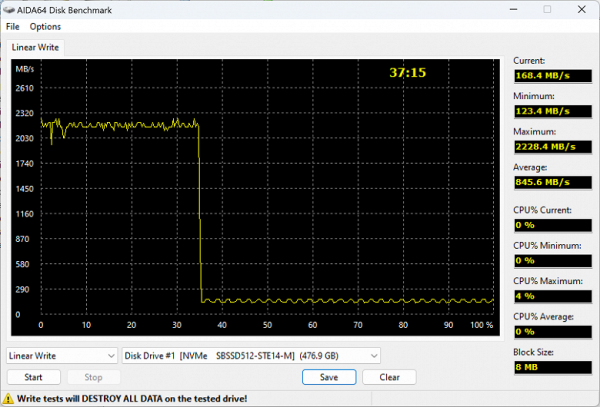
The firmware for the HG2283 was clearly based on the same base, so we see the same cache for all cells followed by a sharp decrease in speed, and the direct write mode is not activated. However, the controller itself has been significantly optimized. Within the cache, the effect of this is not so great, but outside it the speed has doubled. On average, the recording speed has almost doubled, with the main contribution to this being made by recording “tails” during test execution.
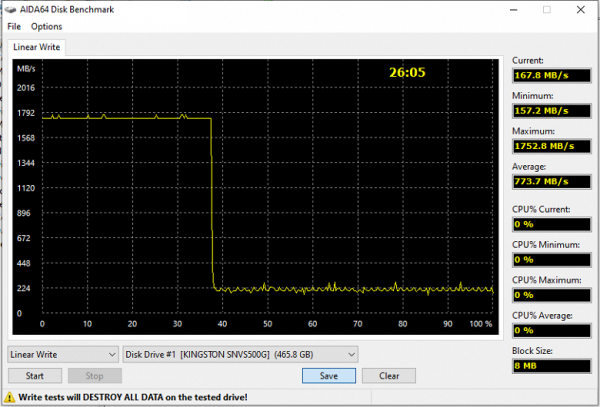
However, this is not yet a reason for joy. A similar approach in the case of the Silicon Motion SM2263XT gives a slightly lower write speed to the SLC cache than even the Crucial P2, but outside of it the speed drop is less. This results in a task completion time of around 26 minutes, which is faster than the Stream E14 can handle. However, from the point of view of the average consumer who runs a simple test like CrystalDiskMark, the E14 beats any of these three SSDs — because such tests do not extend beyond the SLC cache.
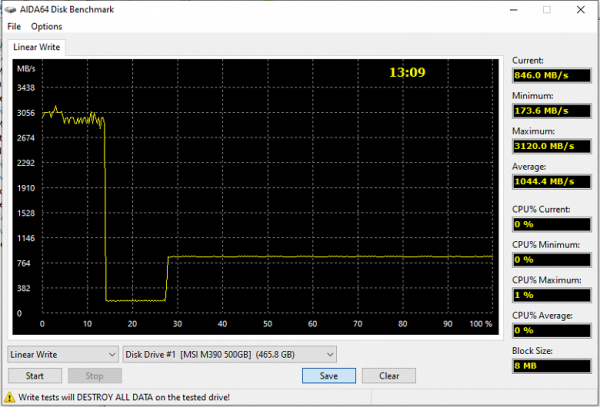
However, it is clear that all this measuring of strength is taking place against the backdrop of newer controllers. In fact, the E15T/E19T is Phison's next step up from the E13T, while the HG2283 carries the hallmarks of the previous generation. The Spatium M390 writes data to the cache at 3 GB/s, and its cache clearing strategy supports faster speeds than all of the above three. But we should not forget that a more optimal caching strategy was also applied here, otherwise the results could have been completely different. And the cache writing speed is an absolute advantage of the new controllers.
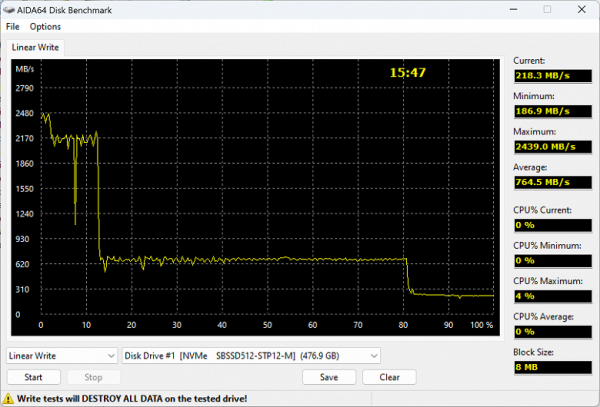
Even the Maxio MAP1202 has not reached this level yet. But this has already been noted — the controller looks great compared to its peers, but the MAP1602 is already designed to compete with subsequent generations of Phison and Silicon Motion controllers. Comparing MAP1202 with them does not always lead to the expected results — there are both improvements and deteriorations.
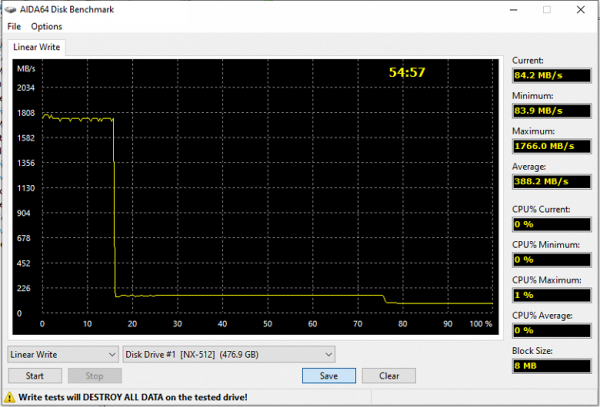
And do not forget that the results of this test very much depend on the memory used — which cannot always be corrected by the firmware or controller. Even with the same MAP1202, but with a terabit BiCS5, the impressions are even less inspiring than with the older, but less “wounded” budget version. Given the unpredictability of budget SSD configurations with the same name, the choice becomes much more difficult. In the tested configurations, the Stream P12 looks better than the Stream E14. But who guarantees that one day he will not be at the level of KingSpec NX? Not us, for sure.
Maximum speed characteristics
Low-level benchmarks in general and CrystalDiskMark 8.0.1 in particular have long been victims in the unequal fight against SLC caching. They are limited in what they can test — essentially only the cache itself. However, the information manufacturers provide about device performance is also limited by cache, so it's always a good idea to check their actual performance. Work on caching is being carried out in order to “hit the cache” as often as possible and demonstrate high speeds, despite the reduction in memory costs.
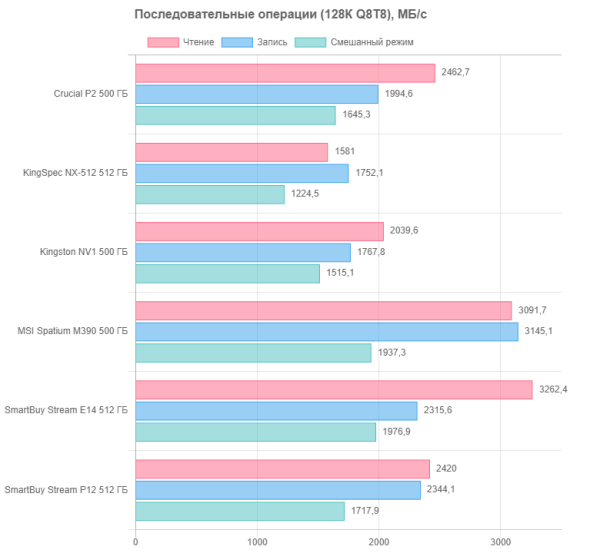
Nothing to do with the aforementioned nightmares. And in general, it’s immediately clear why this “revision” of the Phison E13T was started at all: for the joy of CrystalDiskMark lovers. Not all problems were solved, so the updated HG2283 does not reach the level of the Phison E15T when recording (but this is already known), however, there were not so many SSDs on this controller. Phison E19T behaves the same way — but it is more expensive due to PCIe Gen4 support (albeit on paper). But here it turned out cheap and cheerful — from the point of view of low-level benchmarks, of course.

The “small block” that is still beloved by many (using the same utility, of course) was also configured well. In this case, even the E15T is often inferior — not to mention the others. The only pity is that in practice queues longer than one do not occur.
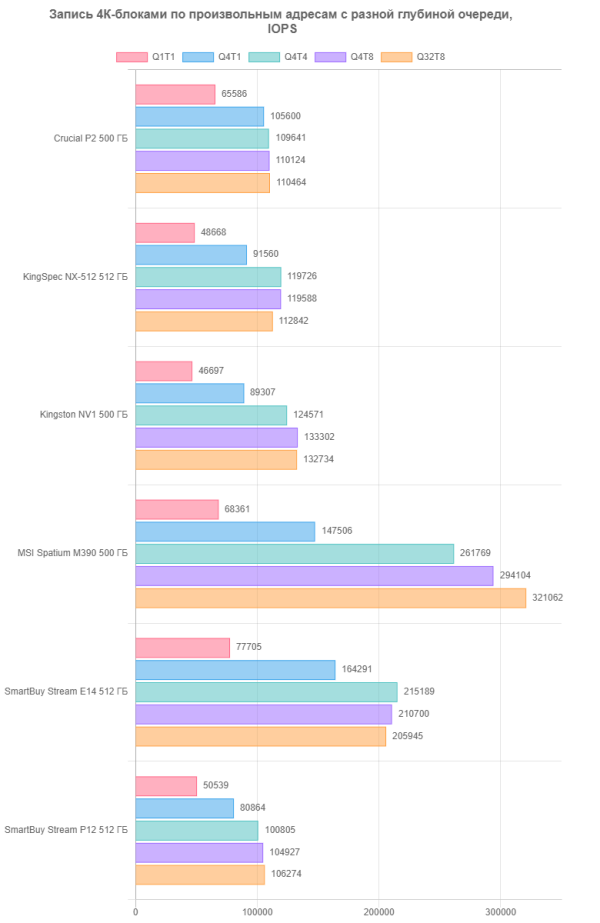
The SLC cache works great when writing, so it’s impossible to keep up with the E15T with fast memory. But smashing the rest turns out to be easy and relaxed.

Contrary to popular belief, such operations have a much greater impact on the speed of real software. “Long” queues, as already mentioned, do not occur in real practice, but blocks other than 4K bytes occur very often. The number of operations per second on “large” blocks is slightly reduced, but the size of the blocks themselves is larger — the resulting speed in megabytes per second is higher. Therefore, whenever possible, everyone tries to work this way. And here the Maxio MAP1202, on the contrary, copes very well (especially when reading from the SLC cache, where even slow memory does not become a hindrance), while the HG2283 is radically blown away.
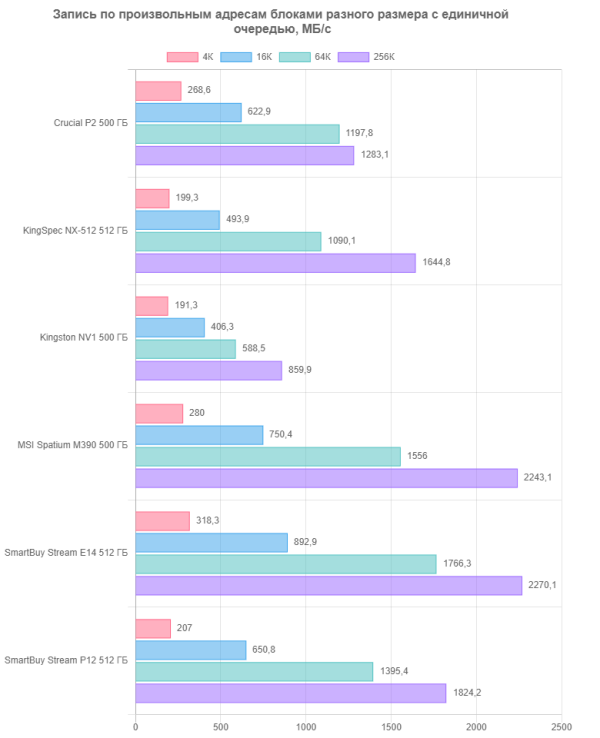
The recording is fine. The work of the optimizers is immediately noticeable: compared to the previous version, there is huge progress in many aspects. In particular, this is noticeable when working with the SLC cache.
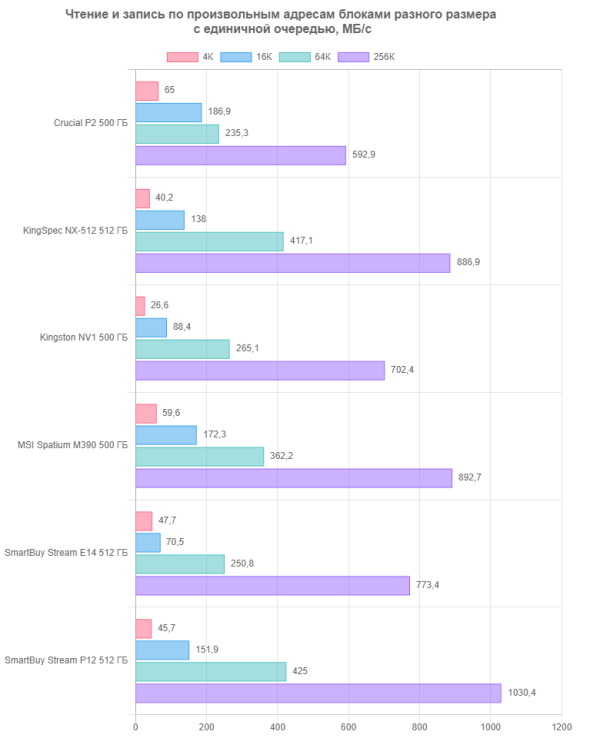
Mixed mode also matters — in real life there is rarely a situation where data is only written or only read. This is especially important in multitasking environments and given the active activity of modern operating systems. But there is nothing new here — with the exception, perhaps, of the low performance of the HG2283 on small data blocks, but this is still not found in this segment of fast controllers. At the same time, they all easily cope with the demands of real software — and have been for a long time.
Working with large files
Despite the impressive results in low-level tests, it is not always possible to achieve such speeds in practice. This is due to several factors. CrystalDiskMark, for example, works with small pieces of information that often end up in the SLC cache during testing. In addition, this tool does not take file system overhead operations such as MFT modification and logs into account, resulting in inconsistent data writing. In this regard, the Intel NAS Performance Toolkit provides greater practical accuracy. With its help, you can test not only the cache, but also evaluate performance under more realistic conditions, for example, when there is almost no free space on the device. This is the approach we always use to more accurately evaluate performance.
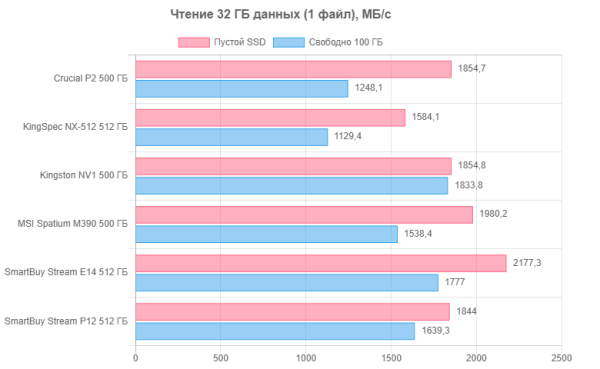
Working in one thread is the most common scenario (in 146% of cases), but at the same time the most difficult. Phison and Maxiotek controllers have long been actively using SLC cache to speed up read operations. While this is often called «optimizing for benchmarks», in practice it also helps improve the handling of temporary files in general. The only honest participant in this scenario is the SM2263XT controller. Otherwise, results with CrystalDiskMark can be impressive, but they rarely achieve this kind of performance in practice, even inside a cache. However, SmartBuy Stream E14 copes with these tasks perfectly, leaving no room for doubt. And SmartBuy Stream P12 also shows good results, which is quite expected for this level of product.
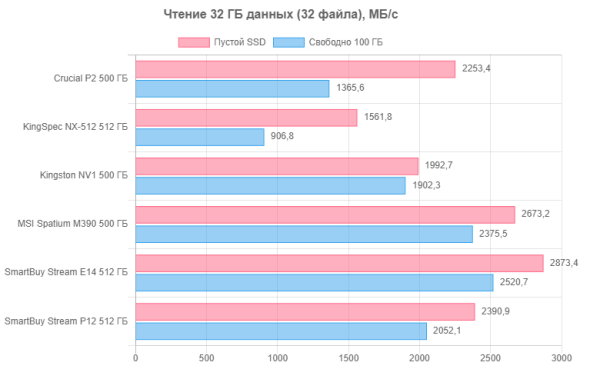
When reading in multiple threads, Stream E14 becomes the undisputed leader. However, there is one nuance here — to which we move on.
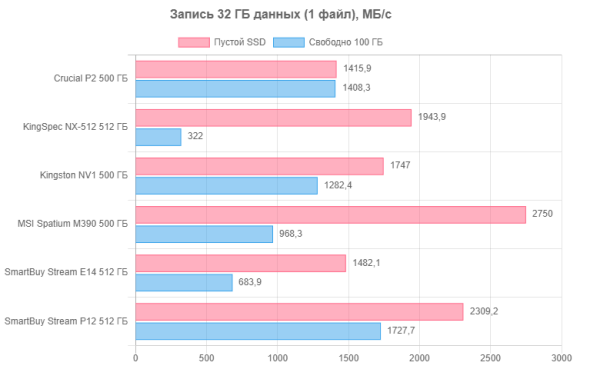
The reason for the decrease in write speed for drives using a limited-size SLC cache is clear — the cache is full, and the test file no longer fits in it. However, for Kingston NV1 and SmartBuy Stream E14 this problem is explained by a cache failure. Previously, this problem was often encountered with SSDs based on the Phison E13T controller, but with the development of Phison firmware it has significantly decreased. Although Silicon Motion has also tried to solve this problem, the results have been mixed. In the case of the HG2283, the firmware appears to have been based on earlier versions for the E13T and inherited the problems. However, there are worse cases, so we do not make serious claims.
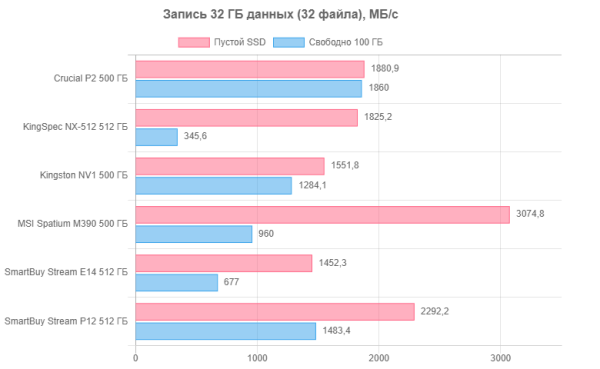
Since single-threaded recording turns into multi-threaded recording in practice, there is no fundamental difference in the results of these scenarios. There are also no fundamental problems. The main goal of budget NVMe devices is to consistently outperform SATA SSDs in the same price segment. They manage to succeed in this. Most of them are even ahead of more expensive SATA SSDs. The main thing is to avoid mistakes in reducing costs, as happened with KingSpec. In general, most users of this class of SSD will use them with pleasure and will not pay attention to any shortcomings.
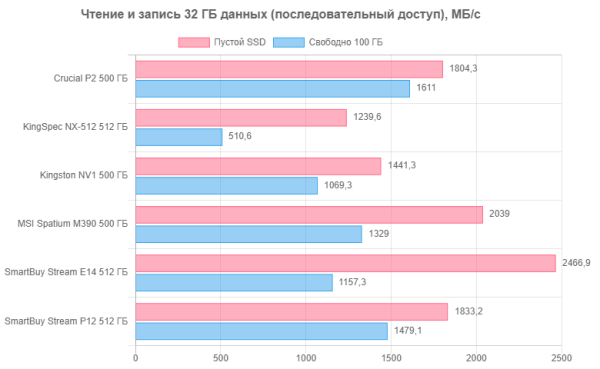
In this case, it also makes sense to pay attention only to the minimum results, since peak speeds are often difficult to achieve and are generally already known. However, even with the worst performance, everything is simple: the main task of all such SSDs is to keep up with SATA drives, including more expensive models. Some devices do this worse (as is the case with the KingSpec NX), but overall most of today's competitors do a better job at this task, and their overall performance is quite acceptable.
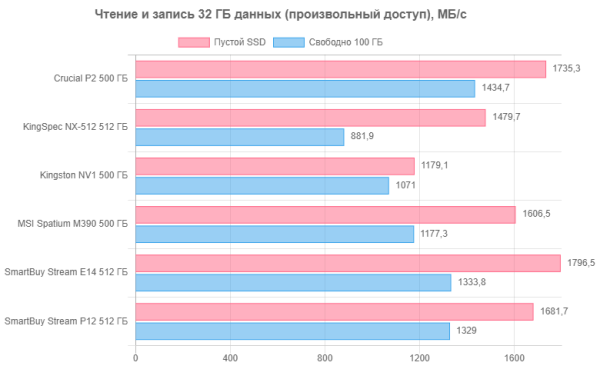
SLC caching allows you to hide all memory flaws. In the case of SATA devices, this often does not happen due to limitations in the controllers. However, in the world of budget NVMe it is a different story: even not the newest controllers successfully cope with tasks under normal conditions and demonstrate acceptable performance even in difficult situations. This is true as long as we use slow but reliable TLC memory. However, the spread of QLC may disrupt this idyll. This may be one of the reasons for the slowdown in this process, although at the moment it may be in favor of buyers.
Comprehensive performance
Currently, the best comprehensive storage benchmark is PCMark 10 Storage. In our review, we briefly described this tool. We noted that not all three tests included in this set are equally useful. The most informative is the «Full System Drive» test, which covers almost all main use cases: from loading the operating system to copying data. The remaining two tests are just a subset of this main scenario and, in our opinion, are less interesting. However, this comprehensive test is useful for accurately measuring not only the data transfer speed, but also the delays that occur during this process. Although averaging these metrics is a bit synthetic, it provides estimates that are closer to reality in general, and not just in individual cases. Therefore, we recommend that you familiarize yourself with this test.

We've repeatedly noted that the Maxio MAP1202 is best in class, and we come across it again. In general, when using fast memory, it is able to compete even with higher-end solutions, including those based on controllers with a PCIe Gen3 interface. However, there is a serious caveat here: the latter are usually equipped with fast memory, which is not guaranteed in the case of the Maxio MAP1202. If we consider slow TLC memory, then it no longer causes such admiration, and if QLC comes across, then the situation becomes even worse. However, it is worth considering the context. For example, in the case of Crucial, Kingston and MSI, they use the same and one of the fastest memory: Micron B47R. But none of them are able to catch up with the “unsuccessful” KingSpec — the controllers and firmware themselves are not powerful enough. Even SmartBuy E14 on the unknown beast HG2283 is only slightly slower than Kingston and MSI. But Crucial still consistently beats them with a real Phison E13T. Obviously, speed is not the only criterion when choosing an SSD. In this class, it may be better to save on brand. However, the issue of durability is more complex. If this is important, then it's worth thinking carefully before choosing a QLC SSD over a TLC for the same money. Do not forget to also take into account warranty issues, since various problems can arise with them in real life.
Total
We recently decided to study the best-selling SATA drive models in retail. However, we were not surprised for the better when we saw that the situation in this segment turned out to be even worse than we expected. In fact, all the «progress» comes down to making an outdated controller cope with the cheapest modern memory. For those who only care about price, this may be good news, but for others, not so much.
The segment of budget NVMe drives, on the contrary, has become more interesting. In it, the surcharge for the model gradually dissolves into the cost of real physical differences. Although they also save on memory and do not always provide platform guarantees, stability is generally higher. In addition, the controllers here are updated more often. Discoveries in this segment are possible and not always unpleasant, unlike SATA.
But are these drives needed at all? It all depends on the price, especially for budget products. Looking at the pair of tested SmartBuy SSDs, we can conclude that a pair in this form is not needed, especially when the Stream P12 is a more intuitive and productive alternative. Although prices and availability may vary, overall the SmartBuy Stream E14 is the preferred choice within the SmartBuy range. They are typical low cost workhorses with a local three year warranty.


